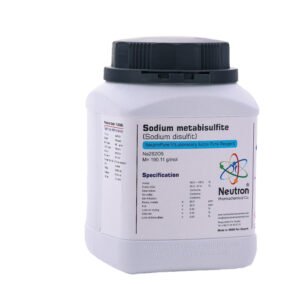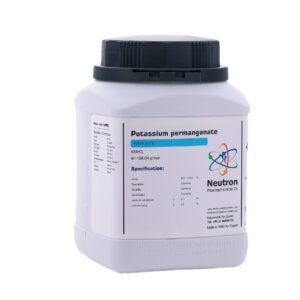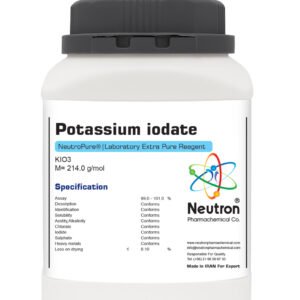تترا سدیم ادتا دی هیدرات
| Chemical formula | C10H12N2O8Na4.2H2O |
| Density | 2.8 g/cm3 |
| Molar mass | 416.20 g/mol |
| CAS number | 10378-23-1 |
| Storage | Store at +15 to + 30° C |
| SDS | available |
| RTECS | AH5075000 |
| R Phrase | R 36/37/38 |
| S Phrase | S 26-36 |
| Odour | odourless |
| Form | solid |
| Color | white |
| Solubility in water | soluble ( 20 ° C ) |
| Assay | ≥ | 98 | % |
| Description | Conforms | ||
| Solubility | Conforms | ||
| Identification | Conforms | ||
| Sulfate | ≤ | 0.02 | % |
| p H | ~ | 11 |
Tetrasodium EDTA dihydrate is an inorganic salt composed of four sodium ions and the EDTA (ethylenediaminetetraacetate) ion, commonly used as a chelating agent in industrial, pharmaceutical, and cosmetic applications.
🏭⚗️ Production
It is produced industrially by neutralizing ethylenediaminetetraacetic acid (EDTA) with sodium hydroxide, followed by crystallization to obtain the dihydrate form. In laboratory or pharmaceutical settings, small-scale synthesis involves carefully controlled neutralization and purification processes.
🔬 Properties
Tetrasodium EDTA dihydrate appears as a white crystalline powder, highly soluble in water, with chemical formula Na₄EDTA·2H₂O and a molar mass of approximately 372.24 g/mol. It is stable under normal conditions and acts as a strong chelator, binding metal ions effectively.
🧪 Applications
This compound is widely used to sequester metal ions in detergents, cosmetics, pharmaceuticals, and food products. It also finds use in water treatment and as a stabilizer in various formulations.
⚠️ Safety
Tetrasodium EDTA dihydrate is generally considered safe but may cause mild irritation to skin or eyes upon contact. It should be handled with standard protective equipment and stored in a cool, dry place away from acids and oxidizing agents.





